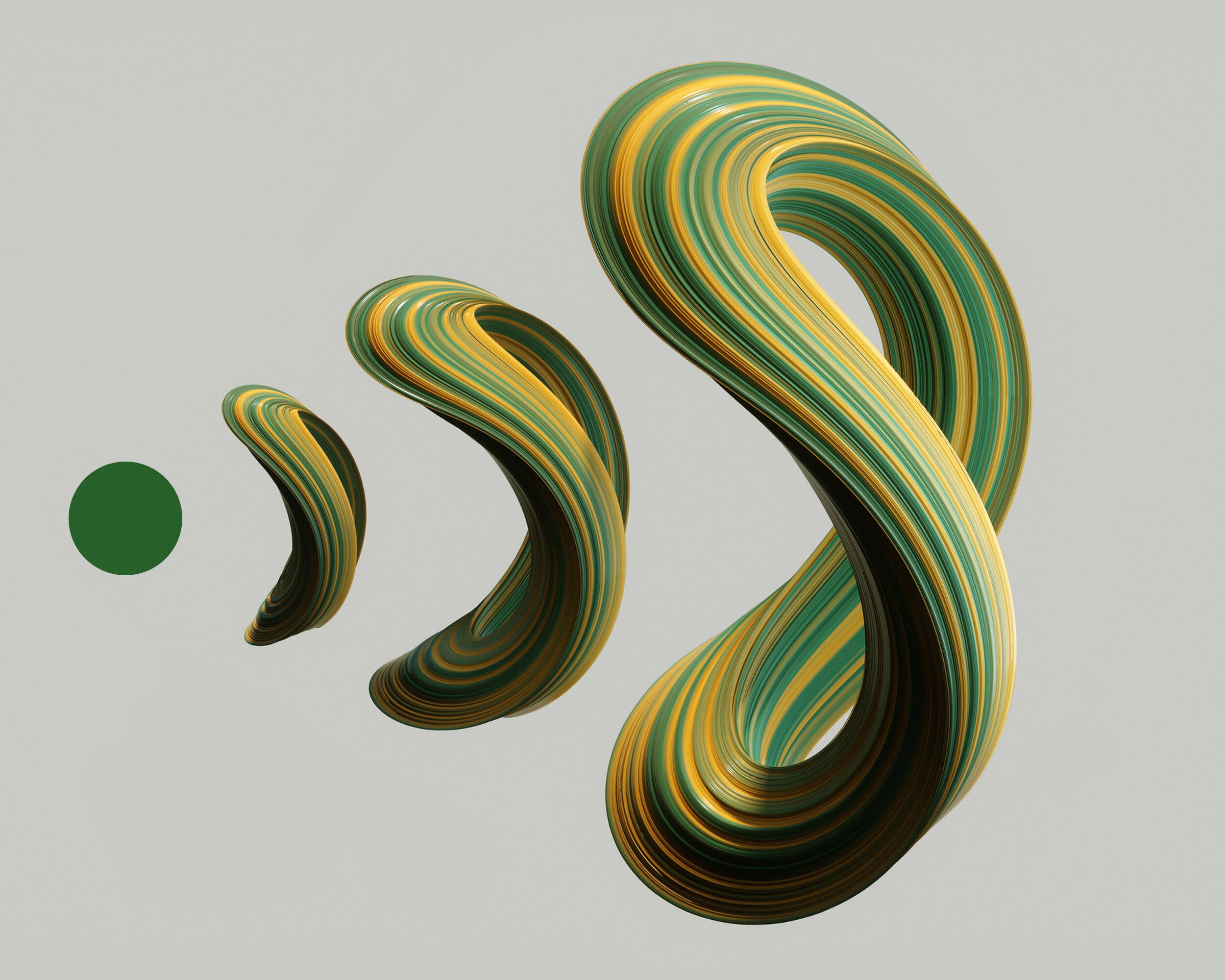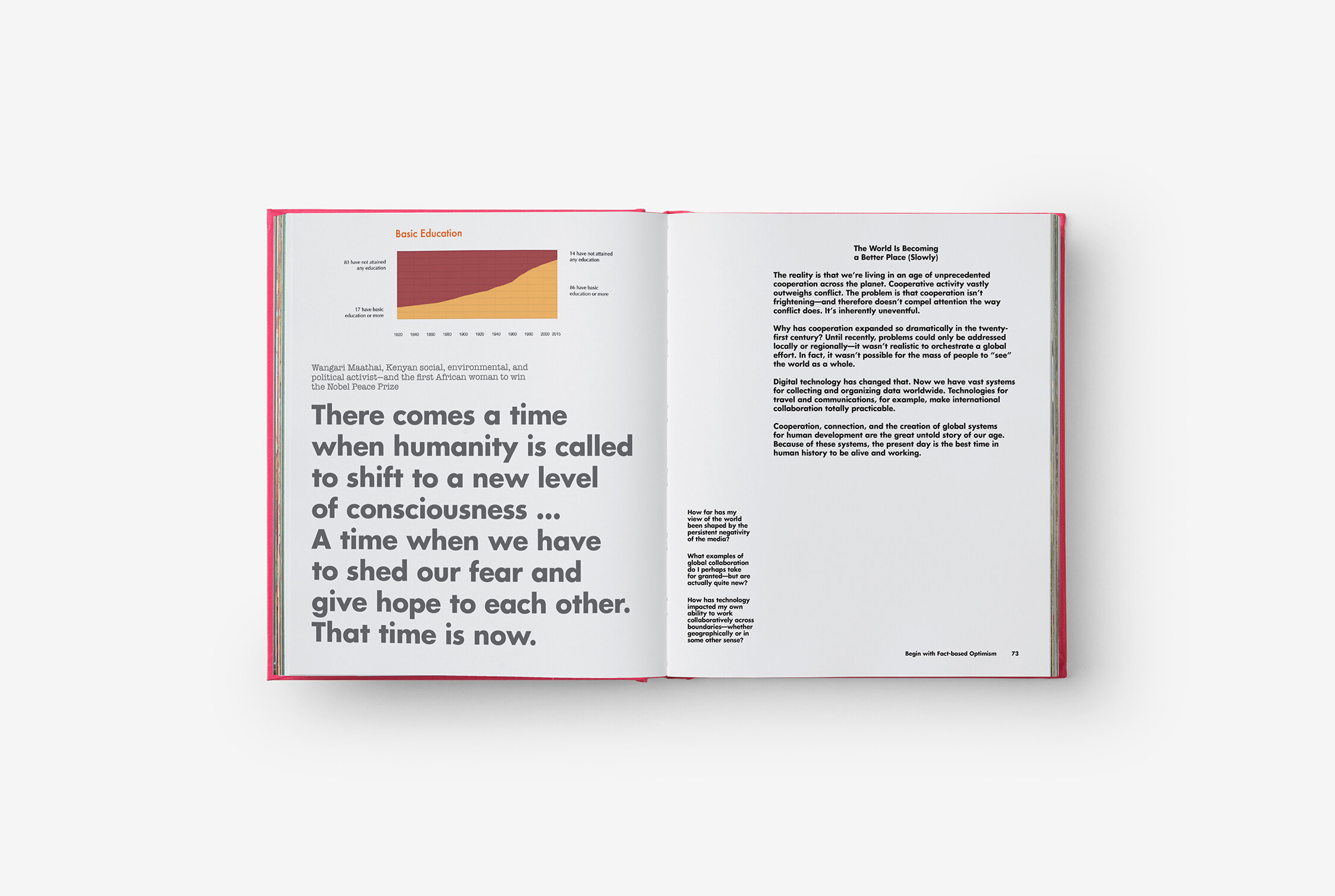
Bruce Mau: We Change By Slowly Changing Everything
/ JULY 03, 2020
/ FIRST PERSON
Bruce Mau doesn’t do small. He writes manifestos, titles his books Massive Change, and believes design can solve the world’s biggest problems. You might wake up and think, What’s for breakfast? Mau wakes up and wonders, How do we design a social movement to imagine a better future?
He has just published his latest opus—yep, it’s big, 512-pages—Bruce Mau MC24. The number stands for Mau’s 24 principles, each presenting a new way to solve problems in life, work, and community. They include Begin with Fact-Based Optimism, Design the Difference, and Think Like You Are Lost in the Forest. (That last one suits us.)
We caught up with Mau in mid-June from his home office in Chicago where he is surrounded by shelves full of books. The topic? The state of the world today, and how we can be a force for positive change. “The reality is that massive change happens as an incremental, sedimentary rock of lots of ideas,” says Mau. “We change by slowly changing everything.”
If a designer came to you and said, Bruce, I really want to make a difference in the world today, what would you tell them?
Being a designer, what you really signed up for is caring. I did a lecture for the Cooper Hewitt about their collection. When I looked at the collection, I thought, What do all these disparate objects have in common? I realized the common denominator is caring. What makes a design product different from other things is that people care more about the user as an individual, not as a consumer, but as a citizen.
Once you care about a person, you can't not care about their context, right? You can't have a healthy, vibrant person in a toxic community. And by extension, you have to care about their environment. You can't have a thriving community in a toxic ecology.
We shift the idea of what design is about from the object and the immediate outcome to life itself—life-centered design, which is an understanding that we are not the center of the universe.
That will come as a shock to some of us.
In thinking about it, the only one of the literary paradigms that isn't self-referential is ‘man against nature’. It’s not man with nature, or nature with man; it’s man against nature. The literary paradigms tell you everything you need to know about who we are and how we see the world.
The concept of life-centered design pushes us to a whole new place where Black Lives Matter, where ecology matters—all the big conversations of our time are located there.
It’s a return on community.
Community is a really interesting thing. We had an extraordinary experience with E.O. Wilson when I was working on the Museum of Biodiversity in Panama City. We got a chance to go into the jungle with Wilson who is probably the best life scientist working today. He explained to us that there is only one thing on the planet and that's life and life has an experiment going in forms. We are one of those forms. And he said, “Rock is slow, and life is fast rock.” That’s good. That's really good.
What you are is matter, almost all of which was formed in the core of stars. Basically everything heavier than the hydrogen is created in stars. It turns out that Joni Mitchell was right, we are stardust. You have a life for a certain amount of time, and it’s the time when that matter is animated with electricity. When the electricity stops, you go back to the Earth and that’s dust, and you will eventually become rock. You have this incredible cycle of life. And you realize that we're all in this together and there is no exterior. There’s no place to dump something that we can't solve.
"Let events change you" is the first point in your manifesto. We're certainly seeing massive disruption and societal change on a global scale, with the pandemic as a conduit. How will designers be challenged by these events? Personally, what are you paying attention to now, that you weren't before?
Not surprisingly, I see the challenges we face in this country as design problems, and the current state of affairs as a design failing. At the core of design is a commitment to caring. From my perspective, the powerful role of empathy – which is central to the MC24 design methodology and its application – provides the only pathway forward to move us beyond the profound crisis we now face.
Racism, anti-gay bigotry, and environmental destruction are all part of the same fundamental cultural problem — not respecting and listening to other living beings. We are all in this together, with one another, and with the rest of the living world.
Book Images courtesy of Phaidon
You’ve notably said we need to focus on designing the difference. What must we redesign and rethink coming out of this pandemic?
One of the biggest things is that our notion of design as a visual practice so dominates our imagination it's hard to think outside of that. Imagine if design was not constrained to the visual, if we were designing a sensory experience and not just a visual experience. You realize that almost all of our design tools are exclusively for the visual. We have almost no tools to synthesize the senses and design for the human: as humans, in their community, and in their ecology. Our design has been so hyper-focused on commerce and visual that we have pushed life out of the system.
We recently came across this quote: "We always overestimate the change that will occur over the next two years and underestimate the change that will occur in the next ten." These days, what are we focusing too much on in the short term and what should we instead be thinking about on a long-term horizon?
The big global transformation that is happening is changing everything. That movement will continue beyond the short term set back of the pandemic. In MC24 I publish a series of brilliant infographics by Max Roser from “Our World in Data.” He shows the long-term positive changes over the last two hundred years in the most important metrics — democracy, education, life expectancy, and infant mortality. What we see is that there has been a positive inversion in all of these metrics. In other words, two hundred years ago, only six percent were NOT living in extreme poverty! Today, only ten percent still suffer extreme poverty. Now, we can’t rest and accept that number. We need to keep working. But the change is profound. Even with setbacks, that long term movement continues.
So, it’s important to see the long term positive and not be crushed by the short term negative.
What is the quiet signal that we should be listening for during these times? Or that we’re missing?
One of the principles of MC 24 is rise above the noise and what we have to understand is that even a good signal creates noise when there's lots of it. You end up producing noise that blocks out your signal.
Most people still don't take responsibility for what people hear. They only take responsibility for what they say. You’ve heard the expression when something goes wrong, “Well, I told them twice.” And you realize: You told them twice; they did not hear you once.
When you take the responsibility for what people hear—and not what you say—it dramatically changes what you do. The demand to rise above the noise is the urgency to say, “You know what? It's my problem if you don't hear me.”
I've got to think about, How do I talk to you in a way that you hear me? That’s very challenging right now in our country where so many people are in no mood to hear anything. What is exciting is that space has opened up—there is a space right now where we're listening to one another.
How can we hear better?
I grew up in Northern Canada, and it was -40 degrees Celsius for weeks on end during the winter. Our house was built on a rocky hill, so it meant we couldn't get running water into the house in the wintertime. My job as a young man was to go to the well in the valley each day on my snowmobile and fill up a couple of 45 gallon drums and bring the water into the house.
When I managed to get away from home and go to college and become a designer, it was almost like I had to live two lives. I had a life on the farm and then I became an urban cat and I had a life as a city dude. Frankly, I was kind of embarrassed about the first life.
I was very deliberate to stay away from the farm life, fearing that I would slide back down there. It wasn’t for a long time that I realized that my experience growing up without running water was something that I shared with about a billion people.
I know physically what it takes to put water in a house, what it takes to carry that water. And I realized that I actually like that core experience and the empathy that it produced. The degree to which I have been successful as a designer, I would say, is the degree to which I have developed an ability to understand someone else's problem, someone else's experience: Why are they struggling? Why are they behaving that way? Why aren't they responding that way?
It all goes back to caring as the core operational principle of design. That, I think, is the answer to your question.
Matt McCue is the co-founder of Creative Factor. He lives in New York City, but is willing to travel long distances for a good meal.




